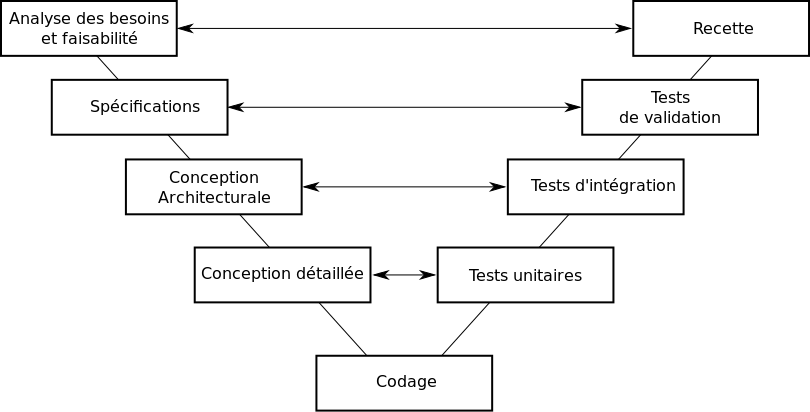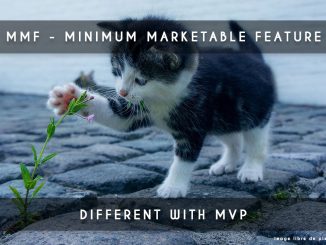
The V-Model, also known as the V-Model approach, is a widely used project management framework in the industry for planning, development, and validation of systems, especially in the fields of engineering and software development.
This model provides a robust structure for managing complex projects, ensuring effective risk management and rigorous validation at each stage of the process. However, it is becoming less commonly used in favor of Scrum.
In this article, we will explore the V-Model, its fundamental principles, and its advantages in project management.
Fundamentals of the V-Model
The V-Model gets its name from its shape, which resembles an inverted letter “V” when graphically represented.
It divides the development process into two major phases, corresponding to the opposite sides of the letter “V”:

Specification phase
Requirements Analysis: This initial phase involves gathering project requirements in collaboration with stakeholders. It defines the project’s objectives and constraints.
Design: Based on the requirements, the design outlines how the system or product will be built. This includes architectural design and technical specifications.
Planning: This step involves creating a detailed project plan, defining the necessary resources, timelines, and costs.
Realization and Validation Phase
Implementation: During this phase, the development team builds the system or product according to the established design.
Unit testing: Unit tests are conducted to verify that each component of the system functions correctly on an individual basis.
Integration: Components are assembled to form a complete system, and integration tests are performed to ensure that interactions between components work correctly.
Validation testing: This stage validates that the system or product meets the initial requirements defined in the requirements analysis phase.
Verification testing: Verification tests ensure that the system or product has been built correctly, following the design.
Advantages of the V-Model
The V-Model offers several significant advantages in project management compared to more traditional waterfall practices.
Risk management: The V-Model allows for early identification and resolution of issues in the project, thus reducing costly risks downstream.
Rigorous validation: Each step of the process is accompanied by testing and validation, ensuring that the final product meets customer requirements.
Clarity and structure: The V-Model provides a clear and well-defined structure for each phase of the project, facilitating planning and execution.
Improved communication: By involving stakeholders at each stage, the V-Model promotes effective communication and mutual understanding of project goals.
Flexibility: While the V-Model is sequential, it can be adapted to incorporate agile approaches, providing some flexibility in project management.
Conclusion
The V-Model is a robust project management model that ensures thorough planning, precise execution, and rigorous validation of developed products or systems. By offering a well-defined structure and emphasizing risk management, it has become an essential tool in the fields of engineering and software development.
While other project management models exist, the V-Model remains a popular choice for those seeking a methodical and structured approach to achieving successful project outcomes.




Be the first to comment